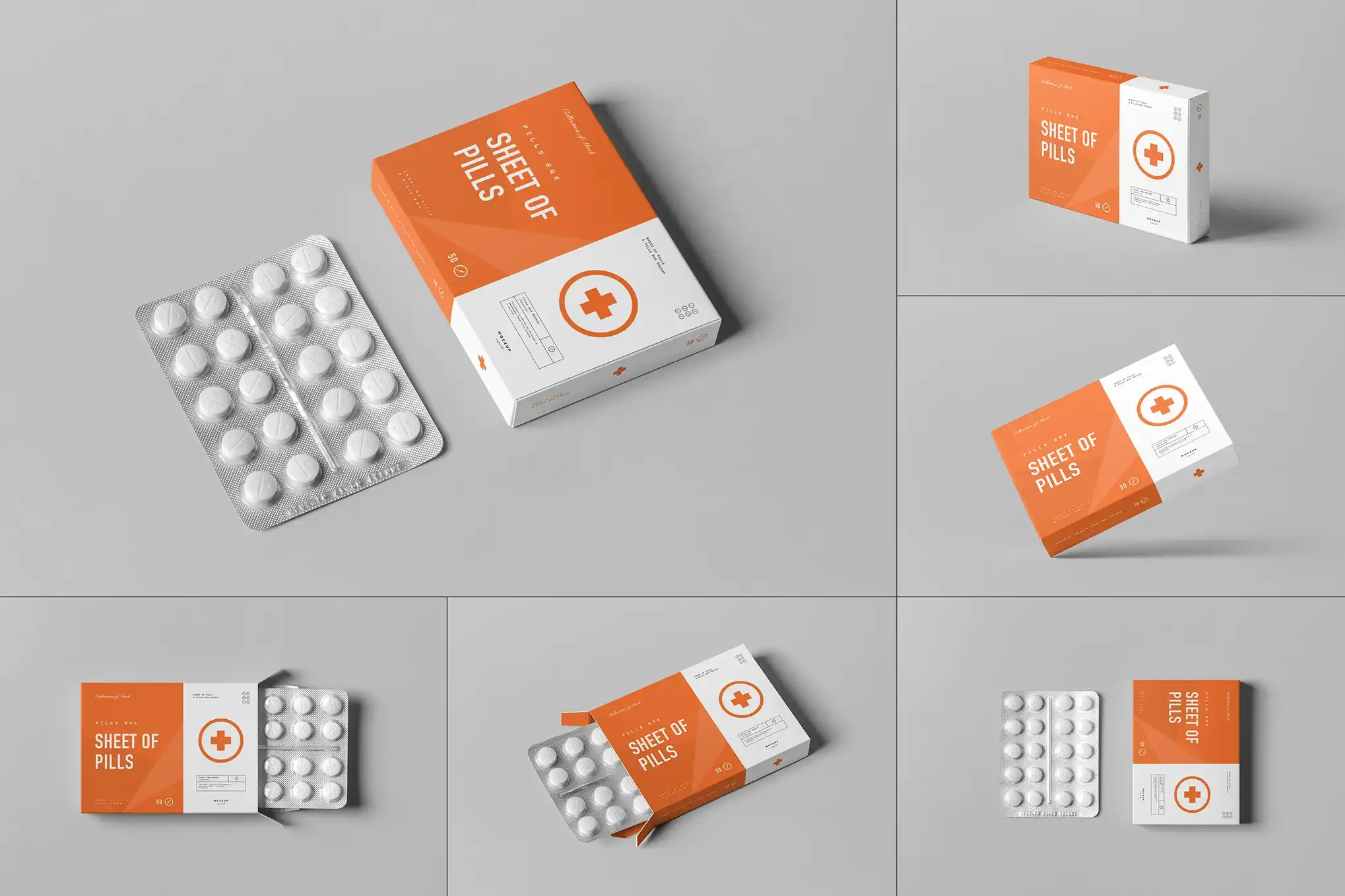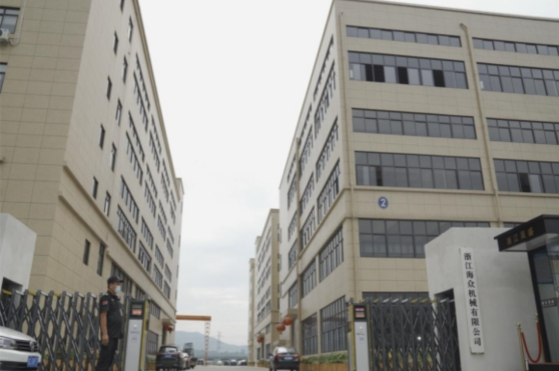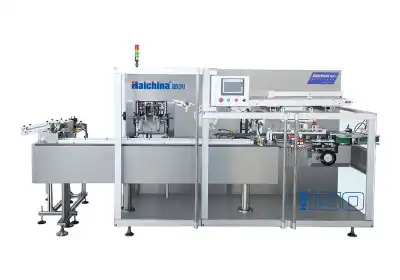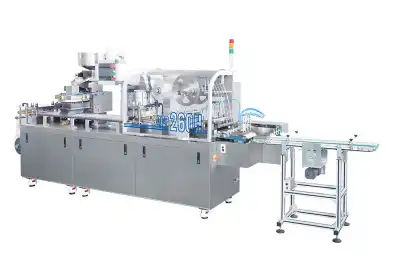The Mechanics of Blister Packaging
Understanding the Blister Packaging Process
Blister packaging involves a sophisticated process that begins with thermoforming. A sheet of plastic is heated and molded into a specific shape, creating cavities or pockets that precisely fit the product. This process requires specialized equipment, including blister packaging machines for pharmacy and other industries. These machines are designed to handle various materials and product sizes, ensuring a perfect fit for each item.
Materials Used in Blister Packaging
The choice of materials in blister packaging is crucial for product protection and presentation. Common materials include PVC, PVDC, and PET for the blister itself, while the backing can be made from aluminum foil, paperboard, or plastic. Each material offers unique properties, such as moisture resistance, clarity, or recyclability, allowing manufacturers to select the best option for their specific needs.
Advantages of Blister Packaging
Blister packaging offers numerous benefits, including enhanced product visibility, protection against tampering, and extended shelf life. It's particularly effective for small, delicate items or those requiring individual dosing, making it a preferred choice in the pharmaceutical industry. The use of blister cartoning machines further streamlines the packaging process, increasing efficiency and reducing labor costs.
Comparing Blister Packing to Alternative Methods
Blister Packing vs. Shrink Wrapping
Both blister packing and shrink wrapping offer product visibility, but they differ significantly in protection and functionality. Blister packing delivers enhanced security through tamper-evident seals and individualized compartments, making it ideal for pharmaceuticals and sensitive products. Shrink wrapping, while cost-effective and suitable for bundling large volumes, provides minimal structural integrity and can be easily compromised. Blister packaging machines for pharmacy use can produce sterile, dose-specific packs with high precision - capabilities that shrink wrapping cannot replicate. This makes blister packing the preferred method when product safety, hygiene, and traceability are critical.
Blister Packing vs. Clamshell Packaging
Clamshell and blister packaging both use thermoformed plastic but serve different functional needs. Clamshells typically consist of a hinged design that fully encloses a product, often requiring more material and a complex sealing process. In contrast, blister packing uses a molded plastic cavity sealed to a flat backing, making it more space-efficient and cost-effective. For products requiring frequent access - such as daily medications - blister packs are easier to open and more user-friendly. When combined with blister cartoning machines, this format supports rapid production and consistent presentation, offering a practical balance of protection, accessibility, and efficiency.
Blister Packing vs. Traditional Box Packaging
Traditional box packaging excels in stackability and physical protection, particularly for shipping and display in bulk. However, it generally conceals the product and lacks tamper-evident features unless paired with additional packaging elements. Blister packs, by contrast, showcase the product directly and offer strong protection against contamination or unauthorized opening. In many cases, blister packs are inserted into cartons to combine the benefits of both styles - product visibility, protection, and branding potential. This hybrid approach is commonly seen in premium packaging solutions, particularly in supplements, cosmetics, and electronics, where both security and visual appeal are important.
Industry Applications and Innovations in Blister Packaging
Pharmaceutical Industry: A Prime User of Blister Packaging
The pharmaceutical industry continues to be one of the largest users of blister packaging due to its superior protection, traceability, and dosage control. Blister packaging machines for pharmacy applications are specifically engineered to meet rigorous regulatory standards, ensuring product integrity and hygienic processing. Each tablet or capsule is securely enclosed in an individual pocket, which reduces contamination risk and enhances patient safety. Additionally, printing capabilities allow dosage instructions, expiration dates, and batch numbers to be applied directly on the foil backing, promoting adherence and supporting pharmacovigilance through improved traceability.
Consumer Goods: Leveraging Blister Packaging for Marketing
In the competitive consumer goods landscape, blister packaging serves as both a protective solution and a powerful marketing tool. Its transparent design allows customers to view the actual product before purchasing, boosting confidence and reducing return rates. Companies often use custom molds and visually appealing layouts produced by advanced blister cartoning machines to reflect brand identity and product value. Whether for electronics, batteries, or personal care items, the ability to combine visibility, tamper resistance, and branding within a single package makes blister packaging a preferred choice in retail presentation strategies.
Sustainability Efforts in Blister Packaging
Environmental sustainability is driving major innovation in the blister packaging sector. Manufacturers are now exploring recyclable and biodegradable alternatives to traditional plastic films and aluminum foils. Efforts include reducing material thickness, using mono-material structures for easier recycling, and introducing paper-based blister packs. Some companies are also launching collection and recycling programs for used blister packs to minimize environmental impact. These changes not only support global sustainability goals but also align with consumer expectations and regulatory pressures, signaling a transformative shift in how blister packaging is designed, produced, and disposed of.
Conclusion
Blister packing stands out as a versatile and effective packaging method, offering unique advantages over other packing techniques. Its ability to provide product protection, visibility, and tamper-evidence makes it invaluable in industries ranging from pharmaceuticals to consumer goods. As technology advances, blister packaging machines for pharmacy and other sectors continue to evolve, offering improved efficiency and sustainability. The future of packaging lies in innovative solutions that balance product protection, consumer convenience, and environmental responsibility, with blister packaging at the forefront of this evolution.
Contact Us
For more information on our blister cartoning machines and blister packaging solutions, please contact us at [email protected]. Let us help you find the perfect packaging solution for your products.





